Flags of the Confederacy
Stars and Bars (1st National Flag)
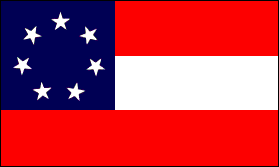
The First Official Flag of the Confederacy. Although less well known than the
"Confederate Battle Flags",the Stars and Bars was used as the official flag of
the Confederacy from March 1861 to May of 1863. The pattern and colors of this flag did
not distinguish it sharply fom the Stars and Stripes of the Union. Consequently,
considerable confusion was caused on the battlefield. The seven stars represent the
original Confederate States; South Carolina (December 20, 1860), Mississippi(January 9,
1861), Florida (January 10,1861), Alabama (January 11, 1861), Georgia (January 19, 1861),
Louisiana (January 26, 1861), and Texas (February 1, 1861).
Stainless Banner (2nd
National Flag)
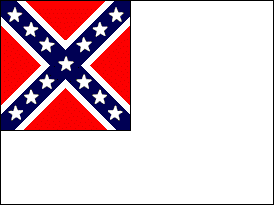
The second Official Flag of the Confederacy. On May 1st,1863, a second design
was adopted, placing the Battle Flag (also known as the "Southern Cross") as the
canton on a white field. This flag was easily mistaken for a white flag of surrender
especially when the air was calm and the flag hung limply. The flag now had 13 stars
having been joined officially by four more states, Virginia (April 17, 1861), Arkansas
(May 6, 1861), Tennessee (May 7, 1861), North Carolina (May 21, 1861). Efforts to secede
failed in Kentucky and Missouri though those states were represented by two of the stars.
Blood Stained Banner (3rd National Flag)
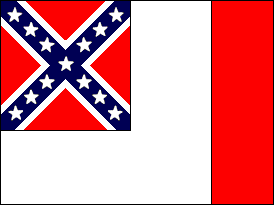
The third Official Flag of the Confederacy. On March 4th,1865, a short time
before the collapse of the Confederacy, a third pattern was adapted; a broad bar of red
was placed on the fly end of the white field.
C.S.A. Navy Jack
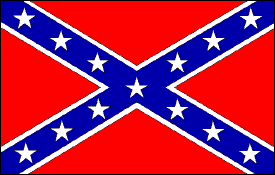
Used as a navy jack at sea from 1863 onward. This flag has become the
generally recognized symbol of the South.
The Bonnie Blue Flag
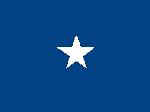
The flag was the national flag of Mississippi after it seceded but only for a
few weeks (the appearance of this flag at this time was the inspiration for the song). The
Bonnie Blue was mostly seen with a dark blue field although at least one lighter blue
Bonnie Blue survived the war in Texas. More of a flag in spirit due to the popularity of
the seccession song , the flag's name is better associated today as the name of the
fictional daughter of Rhett and Scarlett in the book and film "Gone With the
Wind".
Palmetto Guard Flag

April 14, 1861, victorious Confederates occupy Fort Sumter in Charleston
Harbor after driving off Union troops. Private John S. Byrd, Jr. of South Carolina's
Palmetto Guard places this flag on the fort's wall facing Charleston.
South Carolina Secession Flag

When South Carolina seceded, this flag flew over the customs house in
Charleston and then in various cities around the state as a symbol of secession itself.
The crescent, a South Carolina symbol since revolutionary times, is upside down
which is said to be a sign of distress. The star is said to symbolize Southern unity.
Big Red
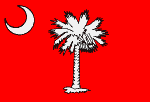
"Big Red" was carried by the men of The Citadel when firing the
war's first shots at the Federal ship Star of the West months before the attack on Ft.
Sumter and remains her flag today.